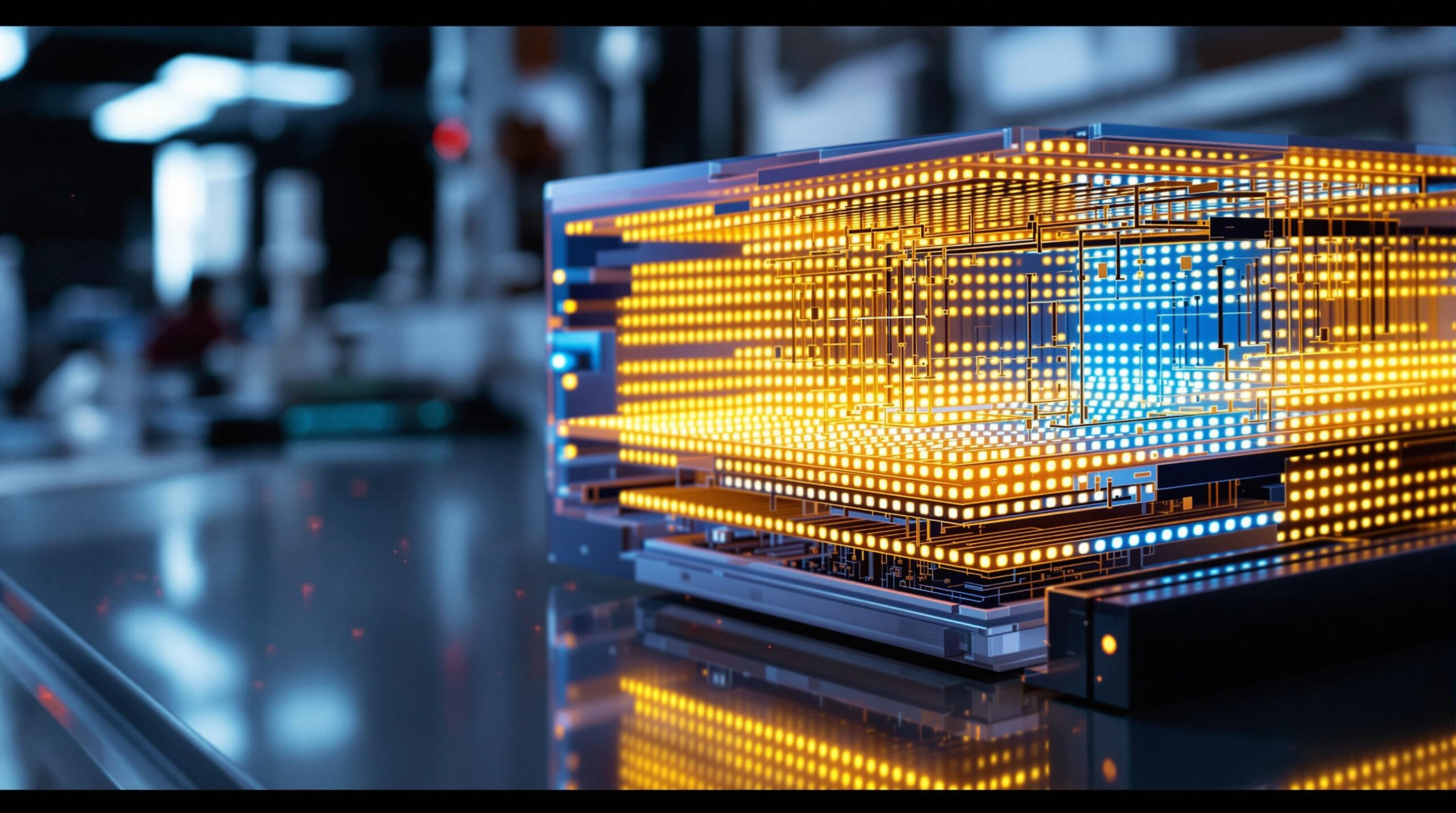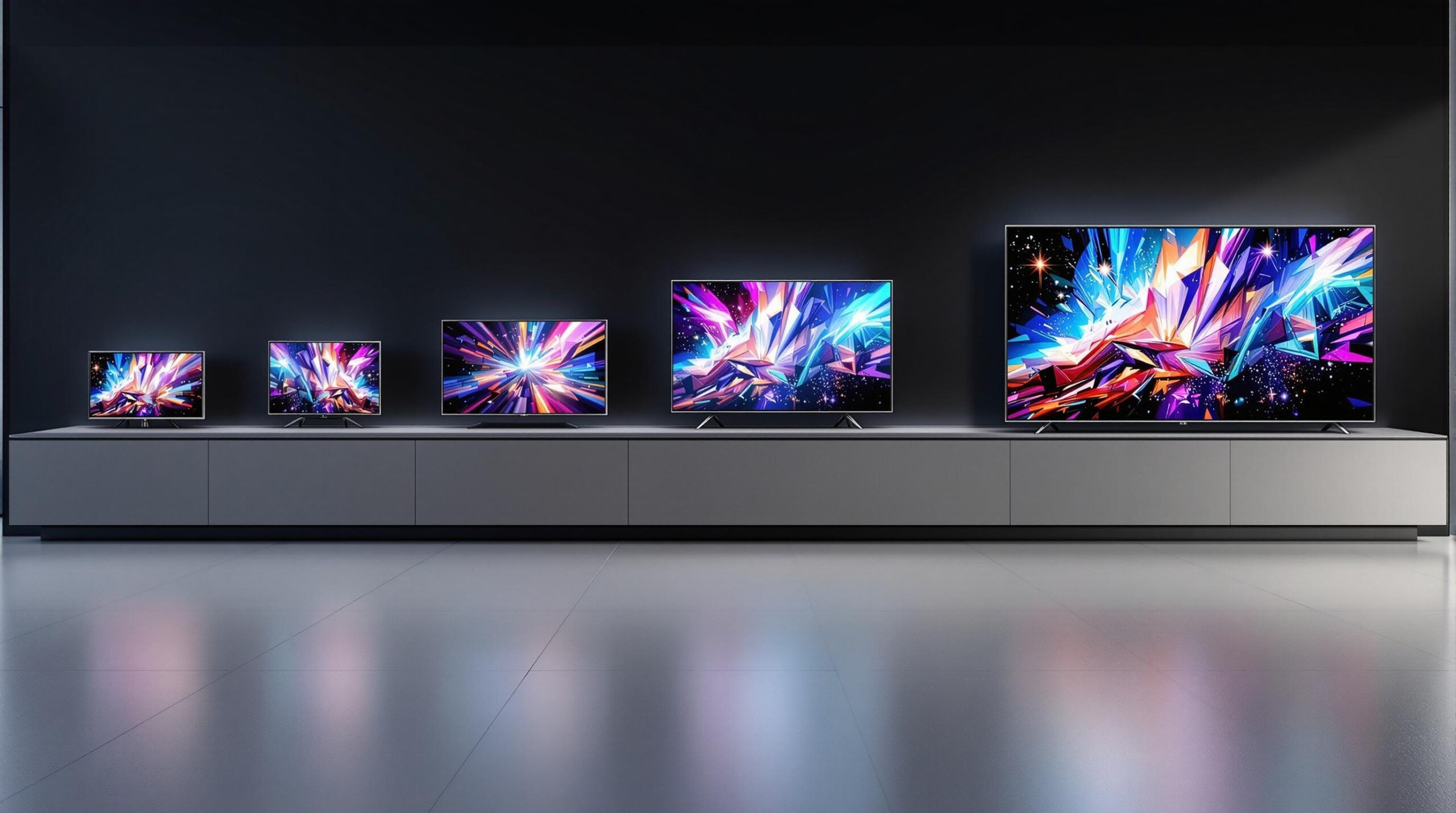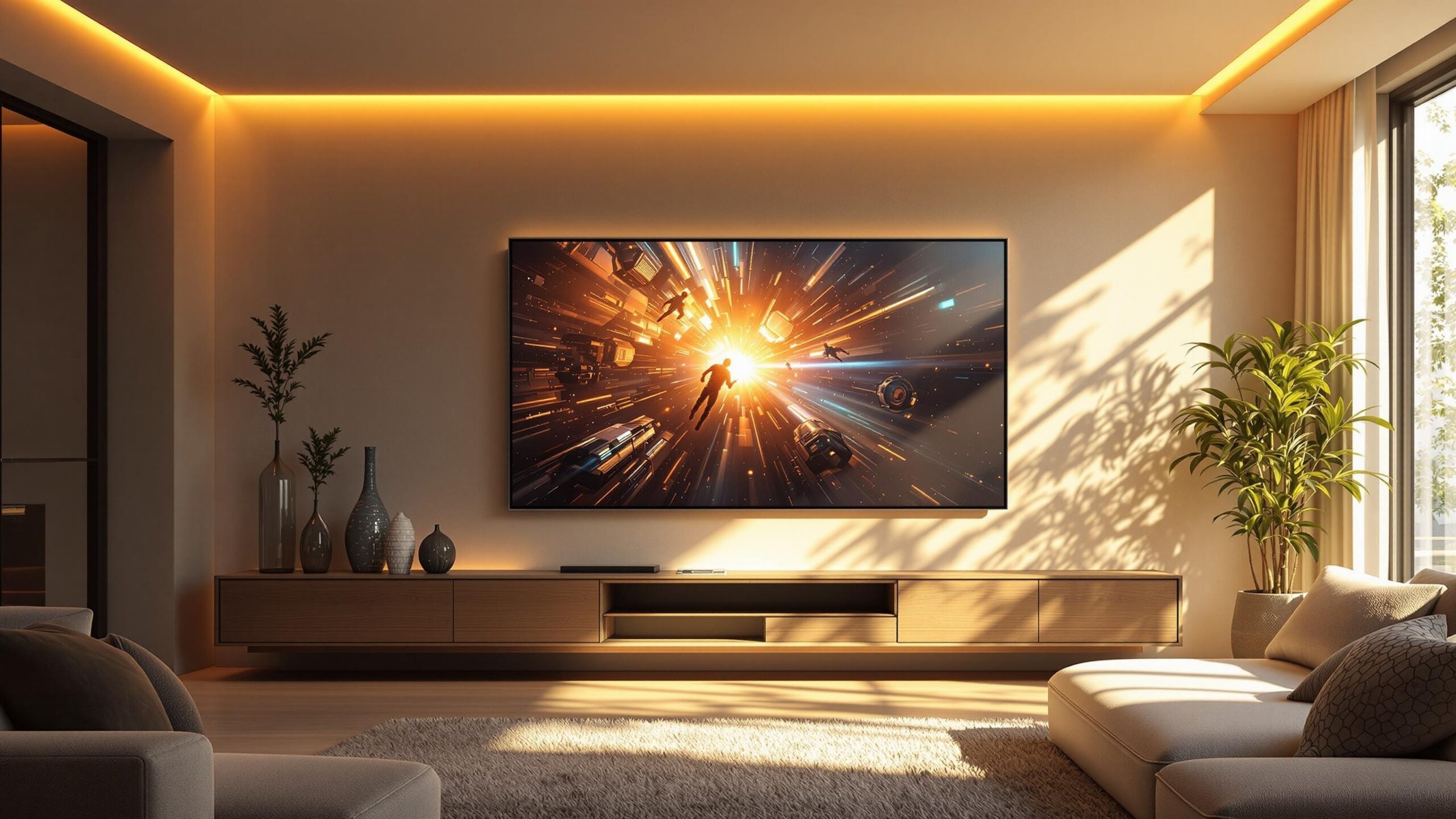Introduction: The Science-Fueled Ascent of LED TVs
For over a decade, OLED technology has defined what many consider the pinnacle of television picture quality—thanks to its self-emissive pixels, perfect blacks, and cinematic contrast. However, 2025 has witnessed a quiet revolution in LED television design. No longer relegated to entry-level status, today’s best LED TVs now challenge OLED and other premium panels in multiple categories: brightness, contrast, color fidelity, response time, and motion clarity. The transformation isn’t a fluke; it’s the result of deep advancements in materials science, semiconductor engineering, optical physics, and display architecture.
This article explores the scientific principles and engineering breakthroughs that are propelling LED TVs into competition with the world’s most elite displays. We will break down how these TVs are built, how they process light and color, and how their underlying technology is being reshaped by innovations such as Mini-LED backlighting, Quantum Dot enhancement, local dimming arrays, and AI-driven upscaling engines.
If you’ve ever wondered how an LED TV can now offer deep blacks, dazzling brightness, and color precision that was once exclusive to flagship OLEDs and QLEDs, this is the technical deep dive for you.
Understanding the Foundation: LED-LCD Display Architecture
Let’s begin by clarifying the nomenclature. What we call an “LED TV” is technically an LCD TV with an LED-based backlight system. The visible image is produced by an LCD (Liquid Crystal Display) panel that acts as a light valve—modulating the intensity of backlight passing through colored filters to create images.
In an LCD layer, liquid crystal molecules are manipulated by applying voltage. These rod-shaped molecules align or twist in response to electric fields, changing how they interact with polarized light. Most LCD TVs use either Vertical Alignment (VA) or In-Plane Switching (IPS) panels. VA panels offer better contrast due to their ability to block light more effectively when turned off, while IPS panels provide better viewing angles by aligning the crystals in a horizontal plane.
These liquid crystals don’t produce light themselves; they only shape it. This is where LEDs come in. Positioned behind or along the edges of the LCD layer, light-emitting diodes (LEDs) generate the luminous energy that drives the entire visual experience.
The Chemistry of LED Light: Electroluminescence and Phosphor Conversion
The production of light in an LED begins with a fundamental quantum mechanical principle: electroluminescence. When a voltage is applied across a semiconductor junction in the LED, electrons and holes recombine in the active layer. As these particles collapse into a lower energy state, they release energy in the form of photons—visible light.
Most modern LED TVs use blue Gallium Nitride (GaN) LEDs, which are chosen for their efficiency and stability. However, blue light alone doesn’t suffice for full-spectrum white. To create white light, manufacturers apply a yellow phosphor coating, often made from cerium-doped yttrium aluminum garnet (YAG:Ce), to the blue LED. The blue excites the phosphor, which emits yellow light; the two combine to form a broad-spectrum white.
This process, known as phosphor conversion, is critical for the performance of the TV. However, it does have limitations, especially in achieving saturated reds and greens. This is where Quantum Dots come into play.
Quantum Dots: Nanotechnology Meets Color Fidelity
Quantum Dots are semiconductor nanocrystals, typically made from materials like cadmium selenide (CdSe) or cadmium-free alternatives such as indium phosphide (InP). These dots are between 2 and 10 nanometers in size, and they exhibit size-dependent photoluminescence—meaning the color of light they emit is determined by their physical dimensions due to quantum confinement effects.
When blue light strikes a Quantum Dot, it re-emits light at a specific wavelength with near-perfect precision. Red and green Quantum Dots are used in enhancement films (QDEF) placed between the LED backlight and the LCD panel. This allows the TV to produce narrow-band red and green light, improving color purity and saturation without sacrificing brightness.
By using Quantum Dots, LED TVs can achieve wide color gamuts, often exceeding 90% of the DCI-P3 spectrum and sometimes reaching into Rec. 2020 territory—something previously limited to OLEDs or high-end cinema displays. This enhancement makes colors appear more vivid, realistic, and distinct, especially in HDR content.
Mini-LED Backlighting: From Coarse Floodlights to Pixel-Level Precision
Perhaps the most transformational advancement in LED TVs competing with premium panels is the adoption of Mini-LED backlighting. Traditional LED backlights used relatively large diodes arranged in either edge-lit or direct-lit configurations. This limited precision and led to common problems such as blooming, where bright objects on dark backgrounds cause unintended light halos.
Mini-LEDs are up to 100 times smaller than conventional LEDs. This allows manufacturers to pack thousands of them into an array behind the LCD panel. Each of these can be grouped into local dimming zones, which can be dynamically brightened or dimmed based on on-screen content.
This innovation offers a near-OLED level of control over luminance. TVs like the Hisense U8N and TCL QM8 use thousands of Mini-LEDs and over a thousand dimming zones, enabling them to display bright highlights and deep blacks simultaneously with incredible precision. Coupled with high peak brightness—often exceeding 2,000 nits—this allows LED TVs to outperform OLEDs in HDR content, especially in well-lit environments.
Local Dimming Algorithms: Software Control Meets Optical Hardware
The performance of Mini-LED backlights is heavily dependent on local dimming algorithms, which use real-time image analysis to determine which backlight zones should be dimmed or brightened. This involves dividing the screen into a matrix of zones and continuously adjusting the LED brightness behind each.
Advanced algorithms take into account not only the luminance of the scene but also its temporal behavior (motion) and spatial structure (edges and gradients). AI-enhanced dimming systems predict where light bleeding might occur and compensate in advance to minimize blooming and preserve shadow detail.
These algorithms operate at extremely fast intervals, often matching or exceeding 60Hz–120Hz refresh rates, to stay responsive to changes in content. As a result, modern LED TVs equipped with Mini-LED and robust software can display deep blacks without the crushed shadows typical of older LED sets.
LCD Panel Enhancements: Pixel Control and Aperture Engineering
While the backlight controls the light source, the LCD panel must precisely regulate its passage. Improvements in Thin-Film Transistor (TFT) architectures have enabled more efficient pixel control. Panels that use Oxide TFTs—such as IGZO (Indium Gallium Zinc Oxide)—offer higher electron mobility than traditional amorphous silicon, allowing for faster pixel transitions and reduced leakage.
Moreover, the aperture ratio of each pixel—the amount of space available for light to pass through—has been optimized through refinements in color filter materials and electrode design. A higher aperture ratio translates directly into improved brightness and energy efficiency, making the most of every photon generated by the backlight.
Further innovations include multi-domain vertical alignment (MVA) and dual-cell LCD technologies, which improve viewing angles and reduce light leakage between adjacent pixels. These enhancements contribute to improved uniformity, sharper contrast edges, and more stable grayscale gradients—all of which are hallmarks of premium image reproduction.
HDR Mastery: Electro-Optical Transfer Functions and Peak Performance
High Dynamic Range (HDR) is perhaps the most visible beneficiary of LED TV engineering improvements. HDR relies on three key capabilities: high peak brightness, deep black levels, and wide color volume. Today’s competitive LED TVs tick all these boxes.
HDR formats like HDR10+, Dolby Vision, and HLG use metadata and Electro-Optical Transfer Functions (EOTFs) to map digital signal luminance to actual screen brightness. This conversion must match human visual sensitivity, which is logarithmic rather than linear. LED TVs with robust EOTF implementations are able to preserve subtle shading while delivering intense highlights, even under bright room conditions.
Additionally, tone mapping algorithms are now AI-augmented, analyzing content frame-by-frame and applying dynamic range adjustments in real time. This allows LED TVs to display HDR scenes with greater impact and accuracy than some OLEDs, particularly when absolute luminance is the limiting factor.
Motion Clarity and Refresh Rates: Physics of Perception
One of the persistent challenges in television design is motion blur. This is partly due to hold-type display behavior, where each frame is displayed continuously until the next arrives. OLED handles this better due to instantaneous pixel response, but modern LED TVs have closed the gap.
This is achieved through multiple approaches. First, panel response time has been shortened via improved liquid crystal chemistry and faster drive voltages. Second, Black Frame Insertion (BFI) or backlight strobing introduces brief dark frames to reset visual perception, mimicking the phosphor decay of CRTs and enhancing perceived sharpness.
Additionally, modern LED TVs offer variable refresh rate (VRR) and high refresh rate (120Hz or interpolated 240Hz) capabilities. This allows them to display fast-moving scenes—such as sports or action films—without judder or blur. In gaming, these features translate into low input lag, minimal screen tearing, and high temporal resolution, rivaling even dedicated gaming monitors.
AI Processing and Smart Integration: Software Meets Silicon
Beyond the hardware, LED TVs now leverage system-on-chip (SoC) platforms with neural network accelerators. These AI engines analyze real-time content and optimize parameters like contrast, sharpness, color saturation, and noise reduction.
Upscaling algorithms have also improved dramatically. Today’s LED TVs use machine learning-trained models to reconstruct fine detail in non-4K content, restoring textures and reducing compression artifacts. Samsung’s Neural Quantum Processor and LG’s α9 AI chip are notable examples of this trend.
These software enhancements allow LED TVs to adapt to their environment and content. Light sensors adjust screen brightness based on ambient lighting; genre-based profiles apply different calibration settings for movies, sports, or games. The integration of smart assistants, streaming services, and even cloud gaming platforms further blurs the line between TV and high-end computing device.
Conclusion: Engineering a New Class of Premium LED TVs
The once-clear boundary between LED and premium display technologies has eroded. What distinguishes the new generation of LED TVs in 2025 is not marketing or price point—it’s scientific and engineering excellence applied with precision. Mini-LED backlighting, Quantum Dot nanocrystals, AI-enhanced local dimming, and finely tuned panel architectures have elevated LED displays to unprecedented heights.
These TVs don’t merely compete with OLED and flagship QLEDs—they challenge them in their own arenas, excelling in brightness, color fidelity, motion handling, and gaming performance. The story here isn’t just about better TVs—it’s about how physics, chemistry, and computational science have democratized what used to be considered elite.
For discerning viewers, engineers, and technophiles alike, today’s high-end LED TVs offer a thrilling convergence of affordability and capability. They are the culmination of decades of research, manifest in displays that bring science to life in every pixel.
LED/LCD TV Reviews
Explore Philo Street’s Top 10 Best LED/LCD TV Reviews! Dive into our comprehensive analysis of the leading OLED TV products, complete with a detailed side-by-side comparison chart to help you choose the perfect protection for your devices.




